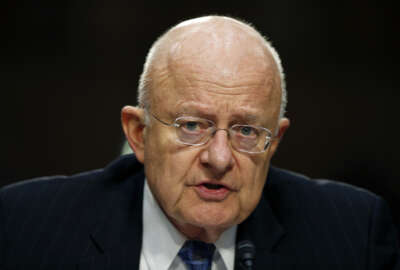

President Barack Obama signed a memorandum promoting diversity and inclusion in the national security workforce. The memo calls for the collection, analysis and...
National security threats come in varying sizes, scope and severity, and the White House wants a federal workforce that’s equally diverse.
President Barack Obama on Oct. 5 signed a memo aimed at providing “guidance to the national security workforce in order to strengthen the talent and diversity of their respective organizations.”
“Today’s presidential memorandum is a step toward cultivating a national security workforce that harnesses the best talent that America has to offer and the bedrock values that America embodies,” said National Security Adviser Susan Rice. “It underscores our belief that the United States must lead the world not by preaching pluralism and tolerance, but by practicing it.”
Jane Rhee, director for strategic planning at the National Security Council, called the memo a “roadmap.”
Speaking at a Center for Strategic and International Studies event in Washington, Rhee said this map can help harness “the best talent we have regardless of background and other characteristics and to really promote the values that we embody.”
“We want to make sure that [the workforce] is going to be well positioned and well-equipped to have all the skills and backgrounds and perspectives that we need to really address the wide array of challenges and opportunities we see in the national security space,” Rhee said.
The memo directs agencies to collect, analyze and distribute workforce data to other agencies as well as the public.
“I think data is really helpful to advancing our progress and holding ourselves accountable for results,” said Office of Personnel Management acting Director Beth Cobert, who also spoke at the CSIS event. “With the incremental data we’ll be getting through the implementation of the presidential memorandum, departments and agencies will more easily identify workplace talent gaps and the efficiency and effectiveness of their diversity and inclusion efforts.”
The data to be collected includes grade and ranks, attrition and promotion demographic data, comparisons to the private sector labor force, and barrier analyses related to diversity.
Agencies are directed in the memo to develop a system for collecting and analyzing “applicant flow data.”
This data includes selection rates, which can help agencies with their recruitment efforts, the memo states.
Agencies are also asked to consider and report on whether or not they would recommend the collection of more specific voluntary data, such as race, ethnicity and sexual orientation.
The memo gives agency leadership the responsibility of not only developing diversity, but of being diverse in and of itself.
National security agencies are instructed to give more training to its senior executives on “unconscious bias” and flexible work policies.
“One of the most challenging barriers to diversity inclusion is unconscious bias,” Cobert said, explaining that someone interviewing for a job with a similar education and background as recruiters can cause a “Like Me bias” and assume that person is qualified for the job. “We need to find a way to fight against those perspectives.”
When it comes to the SES workforce, Cobert said that group is even less diverse than the federal workforce as a whole.
“It is a critical factor that we have been focusing on through this effort as we create leadership and development opportunities,” Cobert said. “It’s an effort where we in working with agencies are working very hard to spread promising practices.”
Within the diversity memo are instructions for promoting professional development opportunities.
This includes conducting stay and exit interviews.
“A lot of folks are starting to do exit interviews to talk about why are people leaving,” Rhee said. “That gets to a better understanding of why you may have lower retention for some groups; but also stay interviews, why are people staying, what are the reasons, what are the opportunities they’ll keep looking for if they stay in your organization, that’s valuable information to have before they already have one foot out the door.”
The memo also encourages agencies to promote public-private exchange programs and detail assignments.
About 3 million people make up the national security workforce, and their offices span a number of agencies, including the U.S. Agency for International Development and the Homeland Security, Justice and Defense departments.
The memo directs agencies to report on the implementation progress in four months.
“We need everyone throughout those agencies and throughout government to adapt that mindset, to adapt this linkage between diversity and inclusion and mission, and until we have that vision and that commitment we won’t make the progress we need to make,” Cobert said. “Diversity can’t be an add-on, it can’t be this activity on the side when we’re thinking about the mission, including the missions in the national security space. It has to be seen as critical. Without that insight, without that perspective, we can’t make decisions that are as smart. When we get that linkage in mind, that’s when we can make steps toward transformation.”
In a statement from Rep. Bennie Thompson (D-Miss.), ranking member of the Committee on Homeland Security, he said diversity and inclusion within the national security workforce “is directly tied to our ability to protect our nation’s interests at home and abroad.”
“While the trend in minority representation is moving in a positive direction, more work needs to be done,” Thompson said. “Attrition and promotion of minorities are lagging and, in some instances, decreasing.”
In June, the Office of the Director of National Intelligence released publicly for the first time its annual demographics report. According to the report, minorities made up 24.6 percent of the IC workforce in fiscal 2015, a 1.4 percent increase since 2011.
Employees with disabilities represented 7.9 percent of the IC workforce, compared with 5.3 percent five years ago. And the number of women at IC agencies has remained practically unchanged — 38.5 percent of the workforce compared with 38.6 percent in 2011.
“We’re going to draw some scrutiny, some of it not to our liking,” Director of National Intelligence James Clapper said of the report at the IC Equal Employment Opportunity and Diversity Leadership Summit in Bethesda, Maryland earlier this year. “But we should draw some scrutiny. That public report is going to put pressure on future leaders to make things better, because we’ll be held even more accountable. That’s another reason why I believe transparency is a good thing.”
Copyright © 2025 Federal News Network. All rights reserved. This website is not intended for users located within the European Economic Area.


